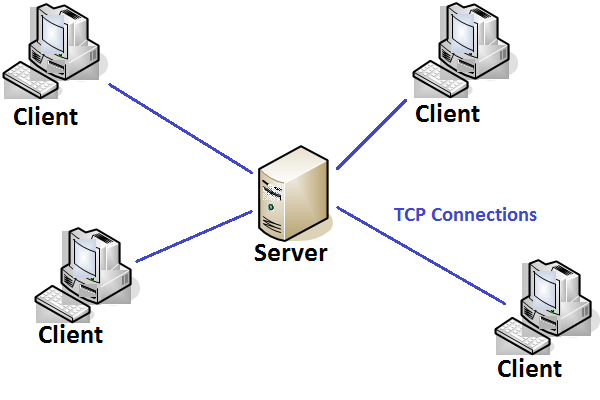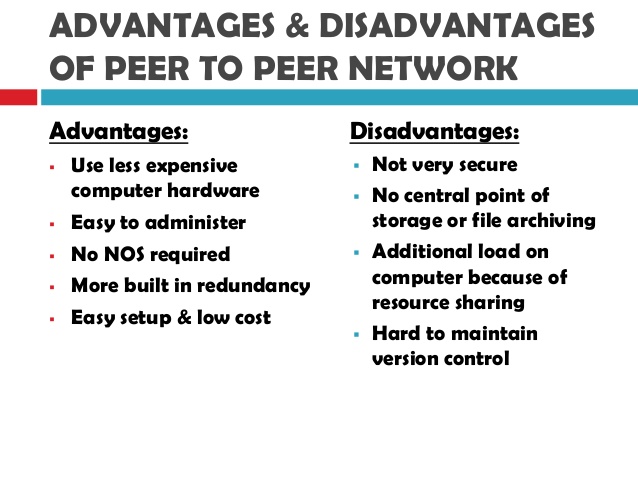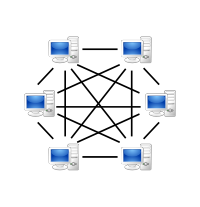
Network topology is the arrangement of the various elements
(links, nodes, etc.) of a communication network.
Essentially, it is the topological structure of a network
and may be depicted physically or logically. Physical topology is the placement
of the various components of a network, including device location and cable
installation, while logical topology illustrates how data flows within a
network. Distances between nodes, physical interconnections, transmission
rates, or signal types may differ between two networks, yet their topologies
may be identical.
An example is a local area network (LAN). Any given node in
the LAN has one or more physical links to other devices in the network;
graphically mapping these links results in a geometric shape that can be used
to describe the physical topology of the network. Conversely, mapping the data
flow between the components determines the logical topology of the network.
Network topology is the arrangement of the various elements
(links, nodes, etc.) of a communication network.
Essentially, it is the topological structure of a network
and may be depicted physically or logically. Physical topology is the placement
of the various components of a network, including device location and cable
installation, while logical topology illustrates how data flows within a
network. Distances between nodes, physical interconnections, transmission
rates, or signal types may differ between two networks, yet their topologies
may be identical.
An example is a local area network (LAN). Any given node in
the LAN has one or more physical links to other devices in the network;
graphically mapping these links results in a geometric shape that can be used
to describe the physical topology of the network. Conversely, mapping the data
flow between the components determines the logical topology of the network.
Network topology is the arrangement of the various elements
(links, nodes, etc.) of a communication network.
Essentially, it is the topological structure of a network
and may be depicted physically or logically. Physical topology is the placement
of the various components of a network, including device location and cable
installation, while logical topology illustrates how data flows within a
network. Distances between nodes, physical interconnections, transmission
rates, or signal types may differ between two networks, yet their topologies
may be identical.
An example is a local area network (LAN). Any given node in
the LAN has one or more physical links to other devices in the network;
graphically mapping these links results in a geometric shape that can be used
to describe the physical topology of the network. Conversely, mapping the data
flow between the components determines the logical topology of the network.
Network topology is the arrangement of the various elements
(links, nodes, etc.) of a communication network.
Essentially, it is the topological structure of a network
and may be depicted physically or logically. Physical topology is the placement
of the various components of a network, including device location and cable
installation, while logical topology illustrates how data flows within a
network. Distances between nodes, physical interconnections, transmission
rates, or signal types may differ between two networks, yet their topologies
may be identical.
An example is a local area network (LAN). Any given node in
the LAN has one or more physical links to other devices in the network;
graphically mapping these links results in a geometric shape that can be used
to describe the physical topology of the network. Conversely, mapping the data
flow between the components determines the logical topology of the network.
Network topology is the arrangement of the various elements
(links, nodes, etc.) of a communication network.
Essentially, it is the topological structure of a network
and may be depicted physically or logically. Physical topology is the placement
of the various components of a network, including device location and cable
installation, while logical topology illustrates how data flows within a
network. Distances between nodes, physical interconnections, transmission
rates, or signal types may differ between two networks, yet their topologies
may be identical.
An example is a local area network (LAN). Any given node in
the LAN has one or more physical links to other devices in the network;
graphically mapping these links results in a geometric shape that can be used
to describe the physical topology of the network. Conversely, mapping the data
flow between the components determines the logical topology of the network.
Network topology is the arrangement of the various elements
(links, nodes, etc.) of a communication network.
Essentially, it is the topological structure of a network
and may be depicted physically or logically. Physical topology is the placement
of the various components of a network, including device location and cable
installation, while logical topology illustrates how data flows within a
network. Distances between nodes, physical interconnections, transmission
rates, or signal types may differ between two networks, yet their topologies
may be identical.
An example is a local area network (LAN). Any given node in
the LAN has one or more physical links to other devices in the network;
graphically mapping these links results in a geometric shape that can be used
to describe the physical topology of the network. Conversely, mapping the data
flow between the components determines the logical topology of the network.
Essentially, it is the topological structure of a network and may be depicted physically or logically. Physical topology is the placement of the various components of a network, including device location and cable installation, while logical topology illustrates how data flows within a network. Distances between nodes, physical interconnections, transmission rates, or signal types may differ between two networks, yet their topologies may be identical.
An example is a local area network (LAN). Any given node in the LAN has one or more physical links to other devices in the network; graphically mapping these links results in a geometric shape that can be used to describe the physical topology of the network. Conversely, mapping the data flow between the components determines the logical topology of the network.
Network topology is the arrangement of the various elements
(links, nodes, etc.) of a communication network.
Essentially, it is the topological structure of a network
and may be depicted physically or logically. Physical topology is the placement
of the various components of a network, including device location and cable
installation, while logical topology illustrates how data flows within a
network. Distances between nodes, physical interconnections, transmission
rates, or signal types may differ between two networks, yet their topologies
may be identical.
Definition
| PEER-TO-PEER |
CLIENT-SERVER |
|
Peer-to-peer architecture (P2P architecture) is a commonly
used computer networking architecture in which each workstation, or node, has
the same capabilities and responsibilities. It is often compared and contrasted
to the classic client/server architecture, in which some computers are
dedicated to serving others. P2P may also be used to refer to a single software program
designed so that each instance of the program may act as both client and
server, with the same responsibilities and status. P2P networks have many applications, but the most common is
for content distribution. This includes software publication and distribution,
content delivery networks, streaming media and peercasting for multicasting
streams, which facilitates on-demand content delivery. Other applications
involve science, networking, search and communication networks. Even the U.S.
Department of Defense has started researching applications for P2P networks for
modern network warfare strategies.
|
Client-server architecture (client/server) is a network
architecture in which each computer or process on the network is either a
client or a server. Servers are powerful computers or processes dedicated to
managing disk drives (file servers), printers (print servers), or network
traffic (network servers). Clients are PCs or workstations on which users run
applications. Clients rely on servers for resources, such as files, devices,
and even processing power.  |


